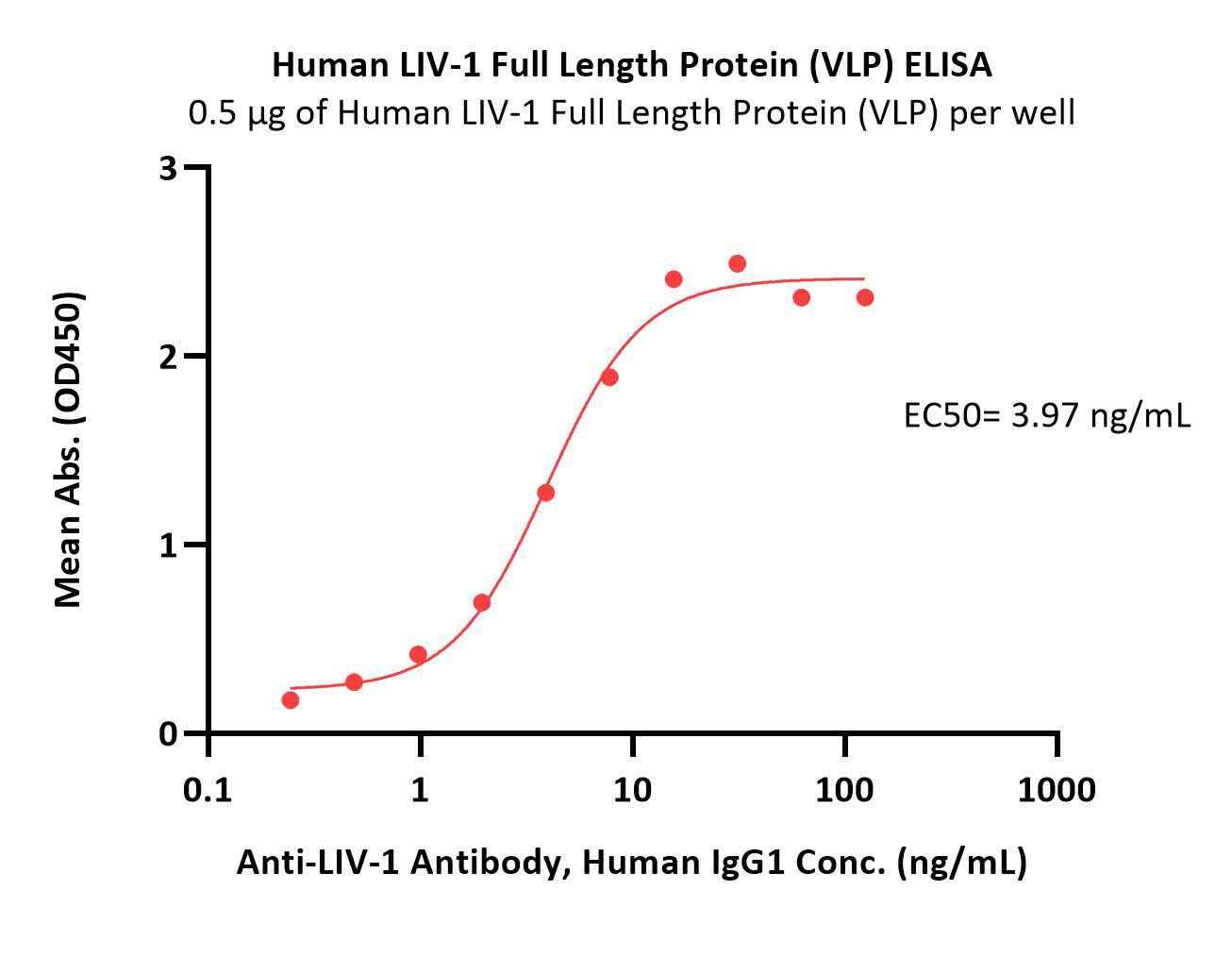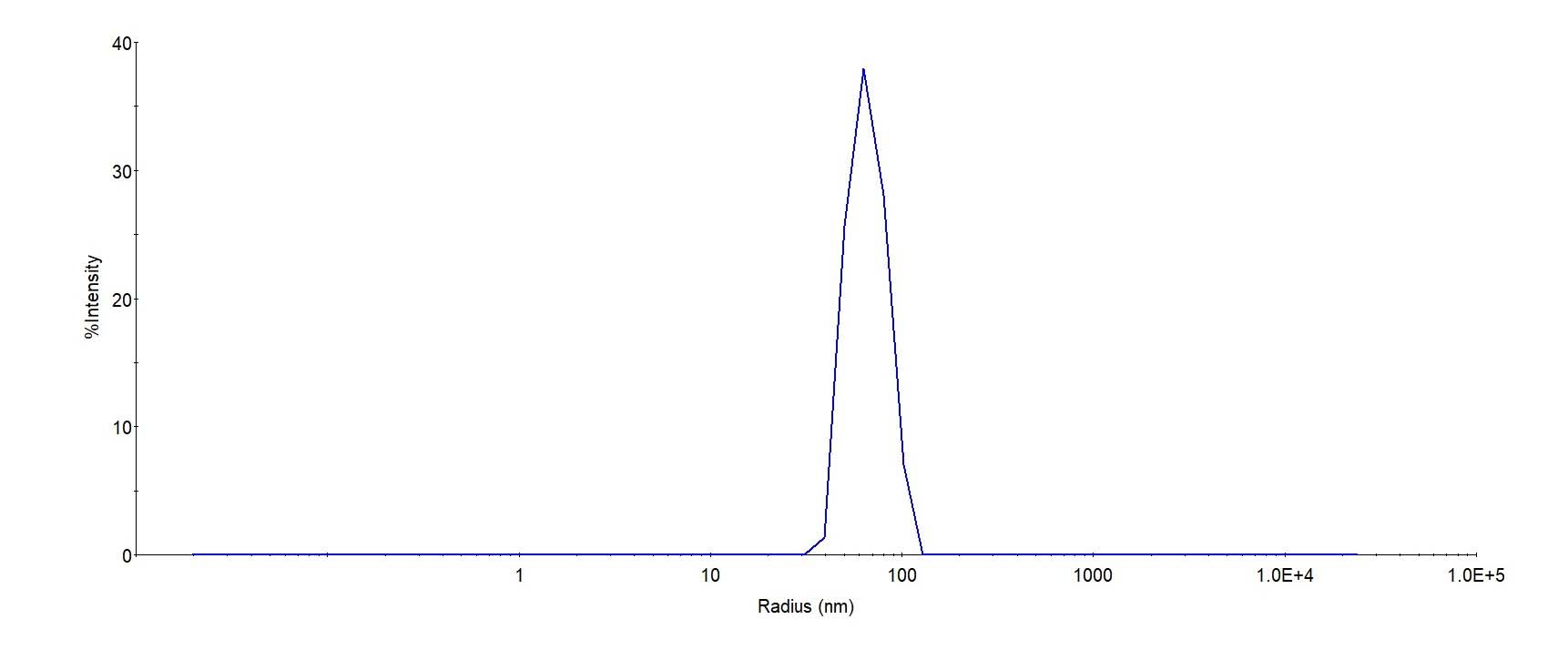分子别名(Synonym)
SLC39A6,LIV-1,ZIP6,Zinc transporter ZIP6,ZIP-6
表达区间及表达系统(Source)
Human LIV-1 Full Length Protein (VLP) (LV1-H52P3) is expressed from human 293 cells (HEK293). It contains AA Phe 29 - Phe 755 (Accession # Q13433).
Predicted N-terminus: Asp
蛋白结构(Molecular Characterization)
Virus-like particles(VLPs) are formed by self-assembly of envelop/capsid proteins from viruses. Membrane Proteins can be constituted in-situ with VLPs produced from HEK293 cell cultures. These VLPs concentrate conformationally intact membrane proteins directly on the cell surface and produce soluble, high-concentration proteins perfect for immunization and antibody screening.

The VLPs provide the display of properly folded membrane proteins in their native cellular membrane in a compact size of 100~300 nm diameter (similar to the size of most viruses) making it optimal targets for dendritic cells in vivo and surface attachment for phage display.
制剂(Formulation)
The VLPs are highly immunogenic, so the immunization strategy should be optimized (antigen dose, regimen and adjuvant).
Supplied as 0.2 μm filtered solution in PBS, Arginine, pH7.4 with trehalose as protectant.
Contact us for customized product form or formulation.
运输(Shipping)
This product is supplied and shipped with dry ice, please inquire the shipping cost.
存储(Storage)
Please avoid repeated freeze-thaw cycles.
This product is stable after storage at:
- The product MUST be stored at -70°C or lower upon receipt;
- -70°C for 12 months under sterile conditions.
质量管理控制体系(QMS)
活性(Bioactivity)-ELISA

Immobilized Human LIV-1 Full Length Protein (VLP) (Cat. No. LV1-H52P3) at 5 μg/mL (100 μL/well) can bind Anti-LIV-1 Antibody, Human IgG1 with a linear range of 0.2-8 ng/mL (QC tested).
Protocol
均一性(Identity)-DLS

The mean peak Radius of VLP is 55-75 nm with more than 95% intensity as determined by dynamic light scattering (DLS).
背景(Background)
LIV-1 is also known as SLC39A6, ZIP-6 and Zinc transporter ZIP6. May act as a zinc-influx transporter. Highly expressed in the breast, prostate, placenta, kidney, pituitary and corpus callosum. Weakly expressed in heart and intestine. Also highly expressed in cells derived from an adenocarcinoma of the cervix and lung carcinoma. Up-regulated by estrogen in breast cancer cells lines.























































 膜杰作
膜杰作 Star Staining
Star Staining










 Loading ...
Loading ...




